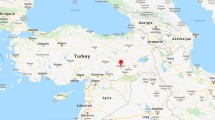Abstract
Over the past quarter of a century Institut Dayakologi has played a leading role in the revitalisation of Dayak identity and interests in Kalimantan. It has done so in collaboration with a large number of non-governmental organisations and community groups with the aim of advancing the position of Dayak people in particular and the rights of indigenous peoples more generally. Tracing the origins of new thinking about the challenges facing the Dayak community to meetings of students and activists in the late 1980s, the chapter examines both the institutional and programmatic development of Institut Dayakologi. Operating at first under the difficult circumstances of Suharto’s New Order regime it surveys the institute’s contribution in building spaces and conditions for Dayak culture to be able to survive. This has been achieved through research projects, documentation programmes, collaboration and facilitation programmes, advocacy and networking, publications and legal challenges. Major challenges remain: the appropriation of traditional Dayak land rights and attendant environmental destruction; destructive government policies; and globalisation and its impacts. These new realities compel Institut Dayakologi to play new roles in the context of current Dayak circumstances and challenges.
Access this chapter
Tax calculation will be finalised at checkout
Purchases are for personal use only
Similar content being viewed by others
Notes
- 1.
Six other houses of neighbouring residents were also burned down. In this chapter, I use the analogy of a house on fire to describe the situation that the Dayaks face.
- 2.
I highlighted the significance and importance of these as early as 1992 at the International Seminar held by the Wahana Lingkungan Hidup Indonesia (WALHI, Indonesian Forum for the Environment) in Jakarta. Pointing to the Dayak Jalai philosophy about prosperity in the saying ‘Sasak behundang, arai beikan, hutan bejaluq’ (There are shrimps found in the riverbed, there are fish found in the rivers and there are wild animals found in the forests), I explained the importance of these three elements of nature for the survival of the Dayaks and their culture. Ten years later in 2002 I still warned about this in the international seminar held in Tomellila, Sweden that discussed poverty and indigenous peoples. Even in understanding what is poverty, Dayaks believe it is caused by the failure of human beings to keep a balance and live in harmony with nature.
- 3.
During the 1980s all organisations had to adopt Pancasila as the sole ideological principle (asas tunggal). Most of the time, the Constitution also had to be used and stated in organisations’ statutes.
- 4.
Institut Studi Arus Informasi is an independent media organisation led by Goenawan Mohamad, a well-known senior journalist with Tempo magazine.
- 5.
During the period since Indonesian independence there have been 14 clashes recorded between Dayaks and Madurese, two of them (1979 and 1997) claimed thousands of lives. The violence happened in 1952 and 1967 (Pontianak Regency), 1968 and 1976 (Pontianak), 1977 and 1979 (Sambas), 1982 and 1983 (Pontianak), 1992 and 1993 (Pontianak municipality), 1994 (Ketapang Regency), 1996 (Sambas), 1997 (Pontianak municipality) and 1999 (Sambas). In 1999 Madurese also clashed with Malays in Sambas, immediately followed by Dayaks joining Malays after one Dayak was also murdered by Madurese. Malay–Madurese clashes also rocked Pontianak in October 2000. See John Bamba (2000: 5).
References
Bamba, John. 2000. Shocking ethnic violence in West Kalimantan: have the headhunters risen from their graves? Paper presented at the International Conference on Conflict Resolution, Peace Building, Sustainable Development and Indigenous Peoples, Manila, 6–8 December.
Bamba, John, ed. 2008. Mozaik Dayak: keberagaman subsuku dan bahasa Dayak di Kalimantan Barat [Dayak mosaic: the variety of Dayak subethnic groups and their languages in West Kalimantan]. Pontianak: Institut Dyakologi.
Djuweng, Stepanus. 1992. The conflicts between the customary land rights and development policy in West Kalimantan: the case of Ngabang, Nobal and Tumbang Titi. Paper presented at the 9th INGI Conference, Odawara, Japan.
Florus, Paulus, Stepanus Djuweng, John Bamba, and Nico Andasputra, eds. 1994. Kebudayaan Dayak: aktualisasi dan transformasi [Dayak culture: actualisation and transformation]. Jakarta: LP3S/IDRD and Gramedia.
Indonesia, Republic of. 1945. Undang-Undang Dasar Negara Republik Indonesia Tahun 1945 Pembukaan [Constitution of the Republic of Indonesia 1945], 5 July.
Indonesia, Republic of. 1999. Undang-Undang Republik Indonesia [Law of the Republic of Indonesia] No. 41, Kehuanan [Forestry].
Indonesia, Republic of. 2004. Undang-Undang Republik Indonesia [Law of the Republic of Indonesia] No. 18, Perkebunan [Plantations].
Indonesia, Republic of. 2014. Undang-Undang Republik Indonesia [Law of the Republic of Indonesia] No. 6, Desa [Village Governance].
Kine, Phelim. 2014. Indonesia’s growing religious intolerance. Human Rights Watch, News, 4 December.
Roekaerts, Mil. 1985. Tanah Diri: Kalimantan Barat, land rights of tribals. Brussels: Coopération internationale pour le développement et la solidarité.
United Nations. 2007. Declaration on the Rights of Indigenous Peoples. Resolution adopted by the General Assembly, 13 September 2007, UN Doc. A/Res/61/295.
Veth, P.J. 1854. Borneo’s Wester-afdeeling, geographisch, statistisch, historisch, voorafgegaan door eene algemeene schets des ganschen eilands, 2 vols. Zaltbommel: Noman.
Author information
Authors and Affiliations
Corresponding author
Editor information
Editors and Affiliations
Rights and permissions
Copyright information
© 2017 Springer Science+Business Media Singapore
About this chapter
Cite this chapter
Bamba, J. (2017). Institut Dayakologi: The Challenges of an Information and Advocacy Centre of Dayak Culture in Kalimantan. In: King, V., Ibrahim, Z., Hassan, N. (eds) Borneo Studies in History, Society and Culture. Asia in Transition, vol 4. Springer, Singapore. https://doi.org/10.1007/978-981-10-0672-2_15
Download citation
DOI: https://doi.org/10.1007/978-981-10-0672-2_15
Published:
Publisher Name: Springer, Singapore
Print ISBN: 978-981-10-0671-5
Online ISBN: 978-981-10-0672-2
eBook Packages: Social SciencesSocial Sciences (R0)




